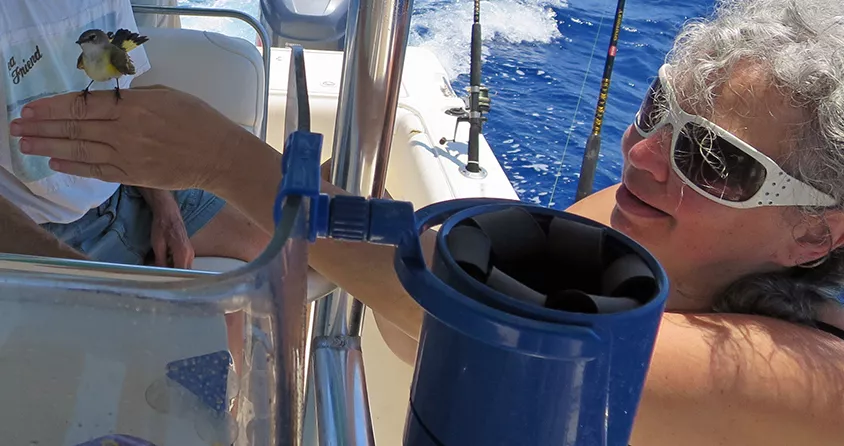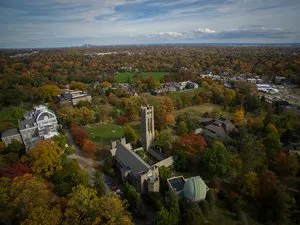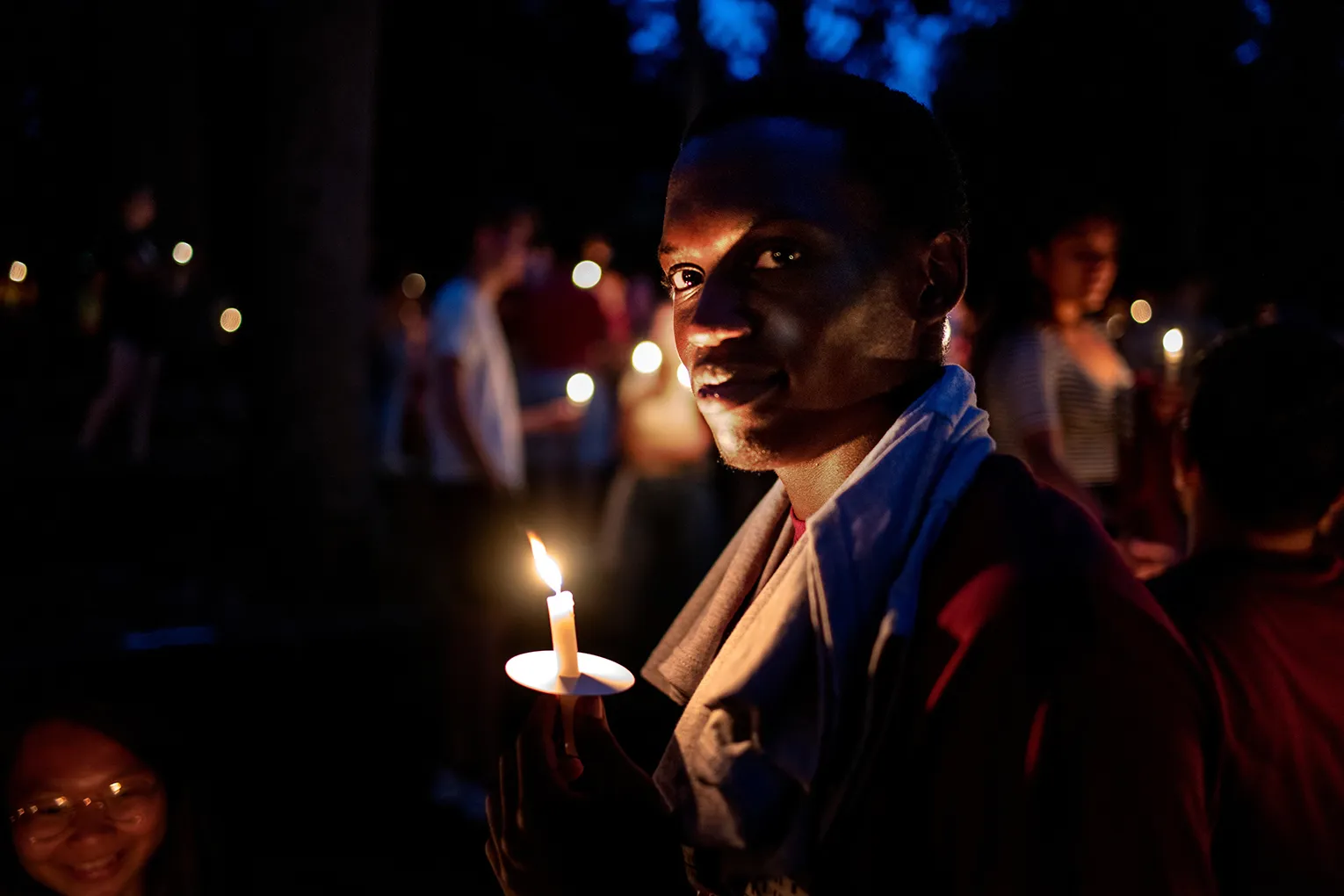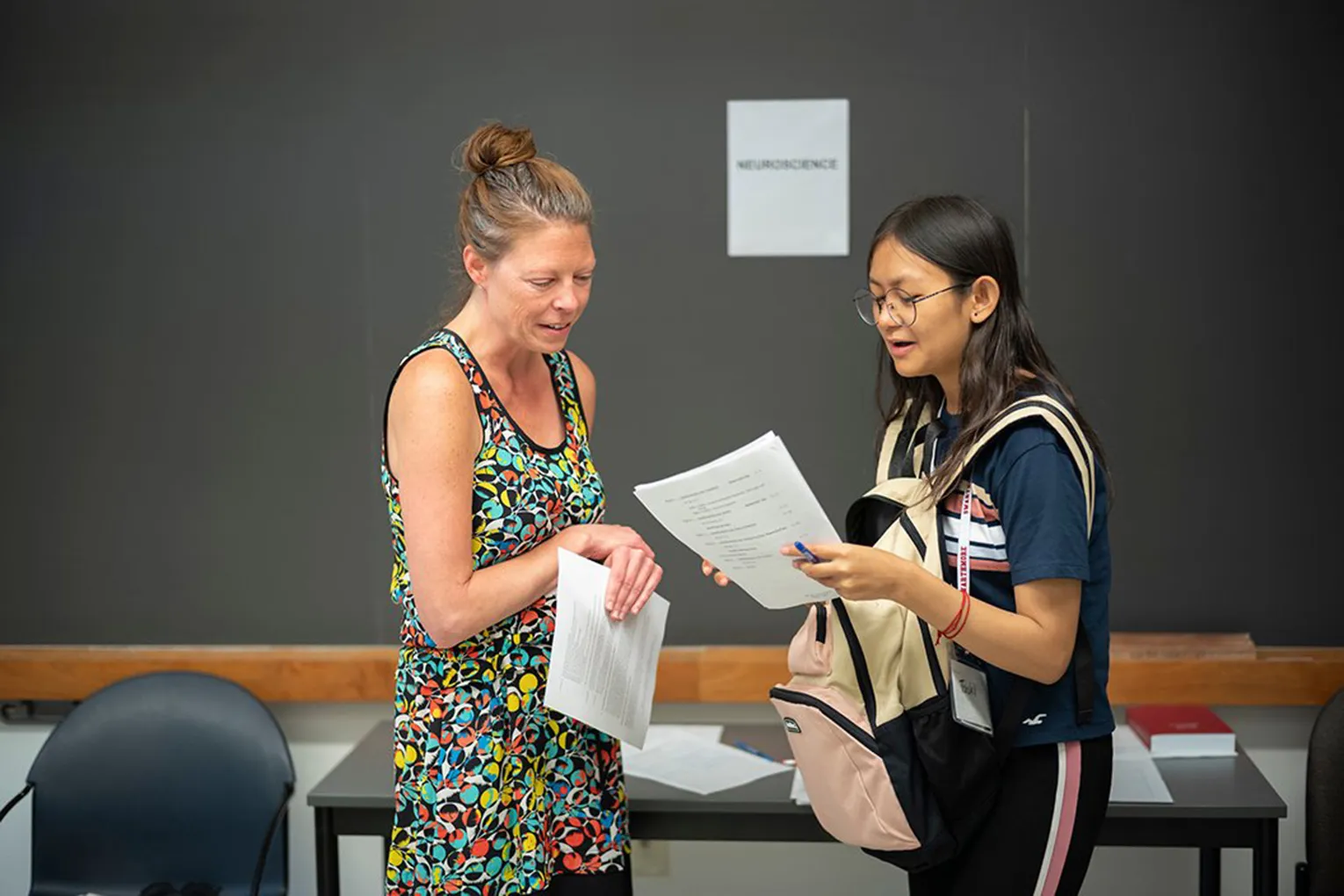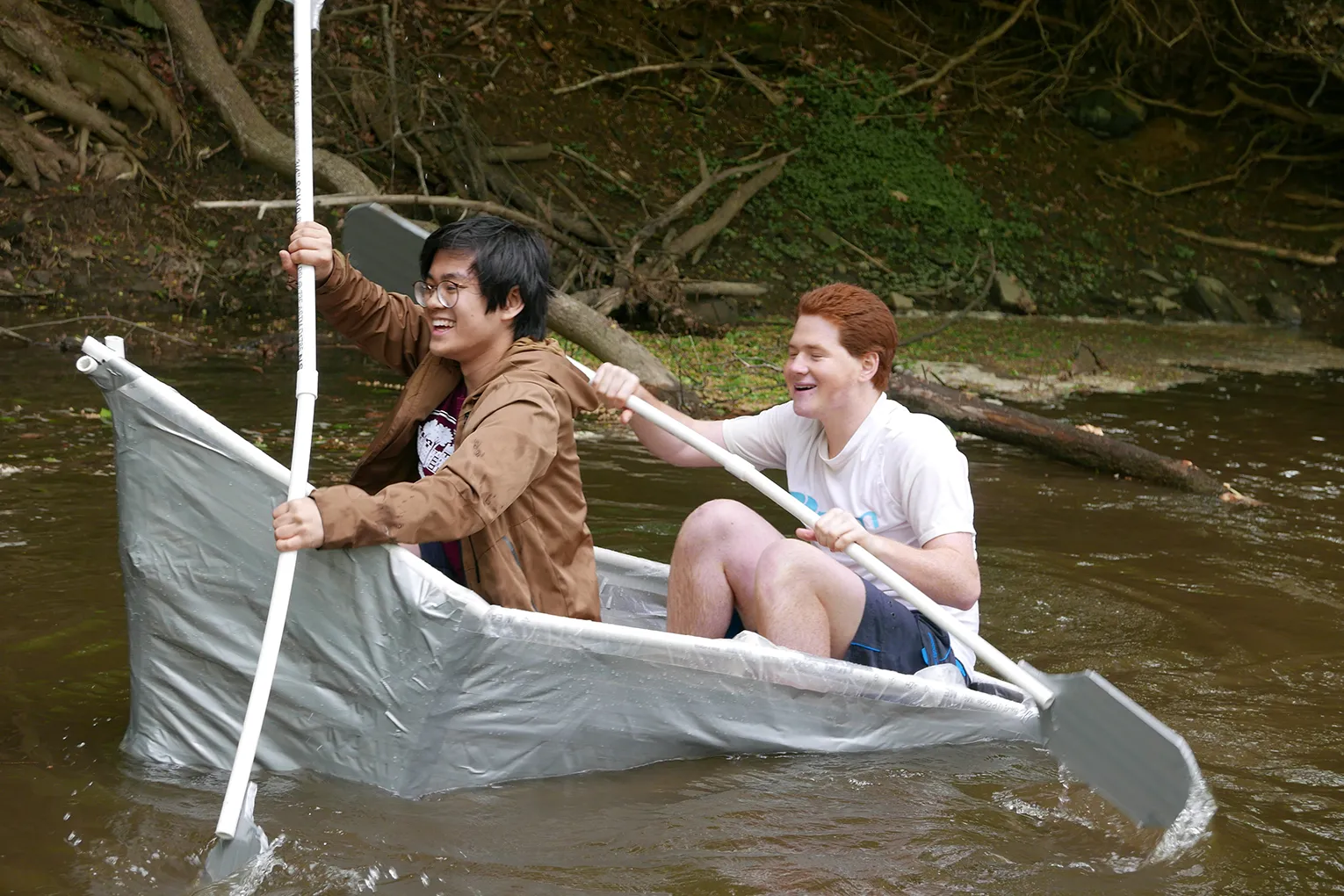[The photo above is from May 2016. I was in a boat 25 miles offshore from the Florida keys, and an American Redstart landed on my hand. If you know my book ALBERT, you can imagine how thrilled I was.]
- Publications [pdf]
- Downloadable Publications
- Curriculum Vitae complete [pdf]
- Writer Website
- TedX presentation "What children (and everyone else) need to read"
Courses I am scheduled to teach:
Fall 2025:
Spring 2026:
For 2025-2026 PUBLICATIONS and PRESENTATIONS, go to the bottom of the page.
Who I am:
I am a linguist down to my toes; I haven't met an area of linguistics yet that doesn't fascinate me. I am honored and grateful for these recognitions:
*Fellow of the American Association for the Advancement of Science, inducted in 2024, see college article.
*Fellow of the Linguistic Society of America (LSA), inducted in 2015.
*Victoria A. Fromkin Lifetime Service Award of the LSA (in 2024),
*Mentoring Award of the LSA (in 2020)
*Linguistics, Language, and the Public Award of the LSA (in 2014).
The AAAS also did a spotlight interview with me in February 2022. The LSA did a spotlight interview with me in April 2017. Swarthmore's The Phoenix did an interview with me (much abbreviated from the hour that we talked together) in April 2024.
As of Dec. 2024, I am a Fulbright Specialist in sign language analysis and deaf education for the next three years (a post I held earlier, as well).
As of fall, 2018, I changed from being Professor of Linguistics to Professor of Linguistics and Social Justice. I am also delighted and humbled to have been appointed the Maurice Eldridge Faculty Fellow starting in fall 2021, an appointment I am trying my best to merit.
What I do:
For years I analyzed the syntax of Italian, with happy detours into other components of the grammar and sometimes other spoken languages (one of the most delightful on Chinese tonal poetry). But when I came to Swarthmore to set up a curriculum in linguistics (a curriculum that became tri-college, with our first graduate in 1993), I needed to teach across the board. Further, when Al Bloom assumed the college presidency in 1991, he encouraged me to design a curriculum that focussed on non-Indo-European languages -- that was the sort of curriculum he was ready to support. That wide responsibility, grounded in Bloom's mandate, and encouraged by widely varying student interests, led me down new paths as chair, teacher, researcher. Now I work on whatever languages present an intriguing phenomenon I think I have the tools to grapple with. I have published on all components of grammar, in synchronic and diachronic perspectives.
Much of my recent work is on sign languages and more broadly cognitive issues that arise from their analysis. There are hundreds of sign languages, some indicated on this map:

Many countries have legally recognized their sign language(s) as among their national languages, as seen here (and Cuba joined this list as of February 2025):

Most often I work with collaborators largely on modality effects. Cornelia Loos (Universität Hamburg and Universität zu Köln) and I are studying how considerations of visual perception affect movement choices across seven sign languages. Casey Ferrara (Colgate University) and I are studying how signers choose a starting point when they draw a shape in the air with data on six sign languages. Ronice Quadros (Universidade Federal de Santa Catarina, Florianópolis), Christian Rathmann (Humboldt Universität zu Berlin), and I are studying iconic shadows (mouth movements that articulatorily align with manual movements of classifier constructions) in three sign languages.
I'm on a team that works to protect deaf children's right to language. We publish mostly in medical journals. You can access our articles here.
I'm engaged in developing materials to encourage shared reading between deaf children and their parents (see below). This is part of a larger effort to promote literacy skills via convincing parents to give their deaf children a rich and firm first language foundation through shared reading activities and convincing teachers (through journal articles aimed at them) of the efficacy of fun and humor in the inclusive classroom.
You can hear a two-part podcast about this work on the right to language and about promoting literacy skills among deaf children in this podcast and this second podcast from October 2025.
With respect to literacy among hearing children, in 2022-2024, I worked with a research team at Università degli Studi Roma Trè, looking at whether the use of gestures during shared reading activities promotes acquisition of a second L1 for immigrant children in Italy and speeds up their developing literacy skills. This work was a natural extension of my commitment to language acquisition and literacy rights in general. I was in Rome in Nov. and Dec. 2023, helping to analyze the results of our first study, and giving presentations in linguistics. We are now writing up the results of our second study. In summer 2025, I was appointed to the Advisory Board of Ventris Learning: Innovations in Language & Literacy, for the MIND THE BOOK series.
Beyond mainstream linguistics, I'm interested in how linguistic theories and methodologies can be applied to analyze body articulations in yoga and dance. This work is part of SUPERLINGUISTICS: I gave the first presentation in a series on SUPERLINGUISTICS at the University of Oslo in January 2019. In spring 2017, I co-taught a course on corporality in storytelling in which we examined silent narrative in films, stage plays, mime, stand-up comedy, sign language visual vernacular, and dance. My partner was Elizabeth Stevens of the Department of Theater. We will teach this again in spring 2026. In spring 2021, I co-taught a course on innovations in dance in the past century with comparisons to innovations in sign literature in the same period. With regard to signing, attention was on the semantics of phonetics (Ha! If you're a linguist reading this, I bet that surprised you). My partner on this was Olivia Sabee of the Dance Department. I repeated that course in spring 2024 with revisions, this time working with Ellen Gerdes of the Dance Department. In spring 2022, I co-taught a course on creating narratives in clay and in language (both spoken and sign). My partner was Syd Carpenter of the Art Department. These co-taught courses were all offered the first time as capstone seminars for the program in Interpretation Theory.
This work has circled back to straight linguistic research: Rachel Sutton-Spence and I investigated torso articulations in sign languages in order to understand what the grammar of sign languages must include (see article in 2024) and torso articulations in sign languages as compared to different dance genres in order to see what sign language art versus performance art is (see article in 2023). Presently, I'm working with Lisanna Grosso of the Università degli Studi Roma Trè and Valentina Colasanti of Trinity College Dublin on comparing emblems (semantically rich gestures that occur in the absence of speech or sign) in Italo-Romance languages and signs in Lingua dei segni italiana , examining articulatory properties to test the hypothesis that emblem articulation should be a subset of sign articulation.
I analyze linguistic innovations in poetry, story-telling, jokes, and taboo language. I organized a conference on Disrespected Literatures at the college in spring 2017; you can see a short (3 minute) video about it here. I co-edited an issue of the Italian online journal Altre Modernità (published by the Università di Milano) devoted to disrespected literatures (December 2019, here). I've published work on what sign language literature can tell us about sign language structure; I integrate analysis of sign language literature into Linguistics 63/Theater 33; I teach Linguistics 29/Comparative Literature 29, on sign language literature from a linguistics perspective (last taught in fall 2024); and I integrate analysis of sign language taboo into Linguistics 2, a FYS on taboo. Cornelia Loos and I published an article on taboo in the sign language of Germany in 2020. Gene Mirus and Jami Fisher and I published several articles on ASL taboo, plus a manuscript with Cambridge U. Press on taboo in ASL with comparisons to other sign languages in late fall 2023.
I also write books (fiction and nonfiction) for children, where recently I've been concentrating on STEM books as well as fiction (my writer website is here). Starting in September 2020, I led multiple writer workshops and gave critiques for the "Telling Feminist Stories Initiative" of the United Nations Entity for Gender Equality and the Empowerment of Women. The launch of the first volume of stories -- titled Awake Not Sleeping: Reimagining Fairy Tales for a New Generation --was 18 November 2021 in Istanbul, Turkey. I gave the keynote address; the link in English is here. My keynote starts around -1:45 and ends around -1:31. I return later near the end of the video, as I moderate a session on why fairy tales matter. In 2023, I was involved in the initial stages of helping prepare writers for the second volume of stories.
In fall 2021, Shepherd "best books" asked me to recommend five books on a topic of my choice in exchange for promoting one of my fiction books. Deaf culture was my choice of topics; In a Flash was my fiction book. In fall 2023, 2024, and 2025 they asked me to talk about my three favorite books that I had read that year in exchange for promoting one of my fiction books. You can see my choices on the link for each year.
I organize events (click for recent ones) at the college, around Tri-Co, and at the Pennsylvania School for the Deaf, to engage people in the various areas I care about.
Very odd detail: In 2019, then-SWAT-student Alex Kingsley asked me to play a part in Episode One of their film series Restless Writers' Retreat. I never acted before -- know nothing about acting. But the part made me laugh, so I did it. The series came out in September 2020. Alex is a wickedly good writer -- keep your eye on them. Here's the first episode. And here's a podcast of their new sci-fi comedy podcast called The Stench of Adventure.
Bimodal-bilingual videobooks
Since 2013, my students and I have been collaborating with Prof. Gene Mirus and his students at Gallaudet University on producing bimodal-bilingual videobooks in sign languages with the print of the ambient spoken language. We've produced over 150 video-books in 35 different sign languages. All along we've been working with the Pennsylvania School for the Deaf, where the students critique our books and often are storytellers in them.
RISE won a Comenius EduMedia Award in 2025 for exemplary digital educational media in terms of pedagogy, content, and design. The college did a write-up of it here.
For a discussion of how and why we do what we do, go here. For a college article about our project, go here.
In spring - summer 2020 our students (past and present) worked with many countries to make bimodal-bilingual videobooks about COVID-19, with the director of technology being Melissa Curran (class of '19). That led to associations with deaf groups in many countries, with new countries added yearly.
In summer and fall 2021 our students worked on bilingual texts Spanish-English for some of our videobooks, to meet the needs of deaf children in North America whose family home language is Spanish. This work was in response to a request from a deaf school in North Carolina.
As of 2021, our students also work on making videobooks with special inserts for autistic children, in response to a request from a publisher in Italy. We have completed three so far, in Lingua dei segni italiana with Italian text. (Research has shown that some autistic children communicate better in the visual/manual modality than in the aural/oral modality.)
For an overview of our work from 2013 through spring 2025, with a peek at what we accomplished in 2024 through funding from the Engaged Humanities Studio of the Lang Center for Civic and Social Responsibility (EHS), go here, and what we accomplished in 2025 through EHS funding, go here. For a 30-second trailer made in 2025 abour RISE, go here.
Gene and I presented the RISE project at the World Literacy Summit in Oxford, UK, in spring 2023. Late in 2023, we initiated a study of what features might make a bimodal-bilingual videobook more effective in promoting preliteracy skills among deaf children. The results of that study helped us revise the RISE website to be a global tool in early intervention for deaf children.

(above Buddha hands, courtesy of the wonderful Sally Hess, who taught dance and yoga at Swarthmore College for many years)
